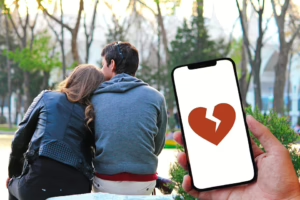Unconventional Love: Finding Beauty in Unorthodox Relationships
In a world where deeply ingrained traditions often dictate the framework of romantic relationships, the notion of unconventional love can sometimes feel like a breath of fresh air. Love in its many forms is a universal experience that transcends cultural boundaries, age, gender, and social conventions. While traditional relationships—characterized by heteronormative ideals or monogamous structures—have their own beauty, it is in the unorthodox that we often find new dimensions of connection, understanding, and love that resists categorization.
Redefining Love Beyond Norms
Unconventional relationships invite us to redefine love. These could take the form of polyamory, where individuals maintain multiple romantic relationships simultaneously with the knowledge and consent of everyone involved; platonic partnerships that blossom into familial structures; or even non-romantic relationships that emphasize deep emotional connection without the label of "romance." Each of these constructs challenges societal norms and demonstrates that love does not have to conform to a prescribed narrative.
For instance, polyamorous relationships counter the traditional narrative of exclusivity often promoted in monogamous contexts. They cultivate communication skills and emotional honesty as partners navigate their identities and desires. Comics, films, and literature increasingly spotlight these diverse arrangements, challenging readers and viewers to see the beauty in love that diverges from the expected.
The Beauty of Embracing Diversity
Another aspect of unconventional love is the diversity it embraces. Often, these relationships surface in communities that celebrate difference—LGBTQ+ spaces, subcultures, and artistic circles. Relationships formed in these contexts may embody a sense of freedom, allowing individuals to create arrangements that best serve their emotional and physical needs rather than conforming to societal pressures.
Consider the rise of "platonic life partners." These couples may choose to live together, share finances, and support each other in times of need, without any romantic involvement. In many ways, these relationships challenge the stereotype that romantic connections are the highest form of intimacy, highlighting the beauty and validity of companionship in varying forms.
Love in the Age of Connection
The advent of technology has further contributed to the evolution of unconventional love. Online platforms provide spaces where individuals can explore relationships that might not be available in their immediate geographic or social circles. Dating apps and social media allow people to match based on interests, sexual orientation, and relationship styles, leading to the formation of vibrant communities that share similar values and desires.
The internet also enables people to connect with those they may never have met otherwise, from different continents or backgrounds. These relationships can offer rich perspectives and experiences, fostering a sense of understanding and respect for cultural differences in the realm of love.
Challenges and Growth
While unconventional relationships can be beautiful, they also come with their own set of challenges. These may involve navigating societal judgments or misunderstandings from friends and family who adhere to traditional values, as well as the internal struggle to define and assert one’s identity against external pressures. Moreover, the need for robust communication and negotiation is heightened in nontraditional arrangements, making emotional literacy a vital skill.
However, these challenges often lead to growth—both for individuals and their relationships. Partners may find themselves pushed to articulate their feelings and needs more clearly, thereby cultivating a deeper understanding of themselves and each other. Through facing societal stigmas, they may develop resilience, empathy, and the capacity to advocate for their chosen forms of love.
Celebrating the Unconventional
The beauty of unconventional love lies in its power to expand our definitions of connection. It invites us to reject one-size-fits-all molds and encourages a more personalized and authentic approach to relationships. By embracing the unconventional, we can cultivate an appreciation for the variety of human experiences and relationships that exist.
In celebrating unorthodox partnerships—whether they stem from mutual interests, shared life goals, or deep emotional ties—we acknowledge that love can flourish in myriad ways. Such recognition can foster a more inclusive and compassionate society, one that honors each individual’s right to seek connection in the manner that feels most authentic to them.
In the end, love is an intricate tapestry woven from diverse threads—the vibrant shades of unconventional relationships enhance the beauty of our collective experience. By opening our hearts and minds to love in all its forms, we create richer, more profound connections that resonate with our true selves.
In conclusion, as we navigate through our own definitions and experiences of love, let us celebrate the unconventional relationships that continue to enrich our lives, reminding us that love’s true essence is found not in rigid definitions, but in the infinite possibilities of human connection.


























Add Comment